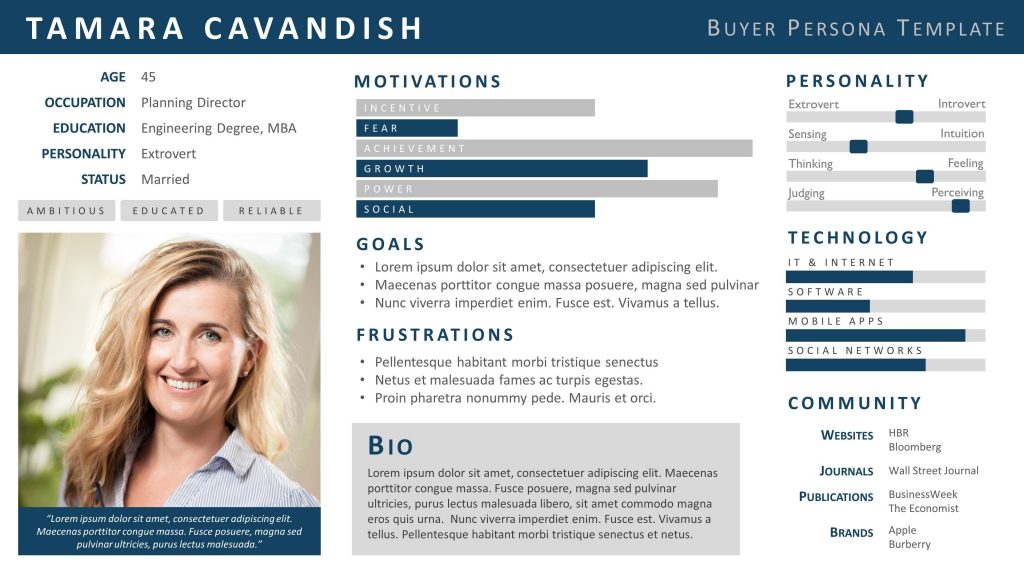
What is a persona?
Persona is a fictional, generalized description of your ideal customers. Instead of choosing a real person as the target customer, you need to imagine a person that doesn’t exist. Personas can also make customers or users tangible and concrete. More and more marketers are using personas as a method to understand more about the customers they want to conceive, design, and develop. Moreover, the company can use the personas method to make its product or service more attractive and usable.
How to create a persona?
First of all, you need to do the data collection by the following methods:
- Market research
- Statistical analysis
- Conducting surveys
- User interviews
- Collect information
- Generate and test hypotheses
Secondly, remember not to conclude too many characteristics in personas. Personas should give you a quick overview, but not confuse you. Here are some characteristics you can consider to put in the personas.
- Name
- Age
- Profession
- Marital status/living situation
- Place of residence
- Interests/hobbies
- Values/beliefs
- Technical ability/software skills
- Media consumption
- Purchasing behavior/habits
- Preferred brands
Lastly, use a clear persona template to organize the information. Here is a sample of the persona template.

Personas for email marketing.
After knowing brief information about personas, now we need to focus more on specific personas for email marketing. Personas for email marketing can be slightly different from the general buyer personas. You may want to especially focus on people who have already subscribed to your email list. Accordingly, you may start by considering a few things:
- Is this person a prospect or a former customer?
- How did they sign up for your list?
- What resources have they downloaded?
- What web pages have they and have they not visited?
Now, it’s time to gather the data you will need to segment your email list appropriately.
Know subscribers’s demographics and preferences.
It is useful to ask your subscribers about their demographics and preferences. You can include an email in the welcome series that asks subscribers to update their preferences and let them know they will only receive emails close to their interests. This action will definitely help your subscribers stay in the subscriber lists and raise the CTA clicks rate.
Track behavior both inside and outside the inbox.
Focus on what actions your subscribers take is really important. You can start by learning their open and engagement history of every mail you send, and their browsing history on your website may be helpful at the same time. The history of your subscribers’ movement is a valuable treasure that allows you to take action in the future.
Deliver targeted content.
After understanding your subscribers, you need to come up with some relevant, useful, and personalized content. You can segment your subscribers first, and then personalized the following things.
- Content of the email (e.g., targeted offers, specialized tutorials)
- The subject line and messaging
- Design and imagery
- Send times
- Call to action
Last but not least,
Don’t forget “relevant” is the most important element!
Reference:
Ross, L. (2019). How to utilize personas for more effective email marketing. Retrieved 29 November 2019, from https://www.invespcro.com/blog/how-to-utilize-personas-for-more-effective-email-marketing/
Meyer, S. (2019). Complete guide: How to create personas based on data | Testing Time. Retrieved 29 November 2019, from https://www.testingtime.com/en/blog/complete-guide-how-to-create-personas-based-on-data/
Image: How to utilize personas for more effective email marketing. (2019). Retrieved 29 November 2019, from https://images.app.goo.gl/G33bpQf7zrmqfe9p7
Image: Buyer Persona Template | Persona marketing, Persona, Personas design. (2019). Retrieved 29 November 2019, from https://images.app.goo.gl/xHBLhjMwZVJgky2v9
